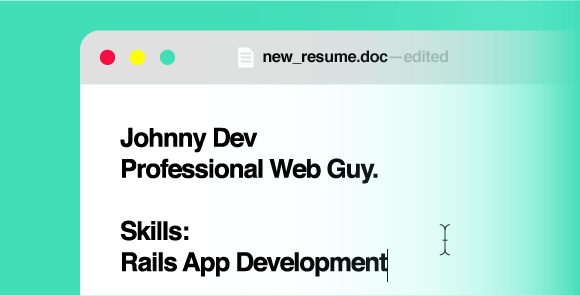A web project can be a new and unfamiliar undertaking. We’ve put together a short list of tips that we regularly share with new clients to set expectations and to help you in planning for the project.

1. Be clear on the goals and why you’re doing the web project.
A web project, especially a major redesign of the organization’s website, can be an expensive investment. We encourage our clients to think through the goals that they hope to achieve with the web project. While the most common answer may be along the lines of “getting a fresh and updated look,” we often find that going a bit deeper reveals other goals. These may include improved workflow for updating content, tighter integration with a third party software, or consolidation of sections into a clearer navigation structure.
An effective way to think about the project’s goals is to identify their impact on the business and how you would go about measuring the impact. If it’s about improving workflow, then one success metric can be about cutting down the time it takes for someone in the organization to update content. If it’s about getting more sign-ups for a newsletter, the success metric could focus around conversion percentages for visitors before and after the project. By mapping out goals and metrics, you’ll have a better handle on what constitutes a successful project and an easier time outlining the reasons for your investment.
2. Assign a dedicated point person to help move the project forward.
A web project is a time-consuming endeavor that requires quite a bit of collaboration. We typically tell our clients to expect communication at least 2-3 times a week if not daily. On some projects, depending on the requirements and schedule, there may be multiple calls, emails, and meetings per day. On our end, we staff each project team with a Producer who is responsible for day-to-day communication as well as the schedule and budget.
Before embarking on a new project, we highly recommend that you appoint a dedicated point person who can act as your project manager. This might be someone who can devote more than 50% of their time each week to making sure your assignments are on track. These assignments may include collecting and aggregating stakeholder feedback on designs, clarifying certain technical requirements, organizing content and assets, or coordinating with the in-house legal team on copy.
If you don’t have someone in-house to manage a web project on a day-to-day basis, we recommend hiring a consultant to help see through the process. An effective consultant could be someone who’s led digital marketing initiatives on the client side or someone who’s worked on the agency side as a designer, developer, or project manager in the past. We’ve worked on a number of projects where a client has brought in a consultant to be the point person on their side, and these have worked out very nicely.
3. Don’t underestimate content creation. Allocate ample time and budget for it.
Without proper planning, content can become a huge roadblock to completing a web project. We tell our clients to prepare for content often and early. As we explore content strategy on a web project, we work with you to figure out how the content will make its way to the website. Will you be providing it? Will you need our help in creating content? How much content will we help populate versus how much content will you input on your own? If you want to take on the content creation assignment, we recommend that you consider hiring a copywriter to help keep the style consistent.
An important thing to keep in mind is that content not only encompasses written text on the website but can also include photography, illustrations, charts, video, and animations. These are all assets that we can help produce, but if you want to take on the responsibility, then it’s very important to plan so that the assets can be effectively integrated with the design and overall experience of the website. We highly recommend that you don’t skimp out on content creation. Having high quality images, video, or copy will help make the website that much more impactful.
And lastly, don’t underestimate the time it takes for content to be fully vetted by all decision-makers. The editing process for body text and headlines can eat up a lot of time. Make sure everyone who needs to have a hand in the editing—the in-house legal counsel, C-suite executives, SEO consultants—are aware of the project schedule and don’t leave editing until the last minute. The last thing you want is to be bogged down with copyedits the day before the website is supposed to launch.
4. Map out internal stakeholders and involve them early.
Depending on the size and structure of your organization, you’ll find that there are various parties who’ll need to weigh in on the web project. Some of these internal stakeholders will be direct decision-makers whose feedback on content, design, and functionality will be the final word. There will be others who may not wield decision-making power but whose input will be just as valuable in the long-term success of the website. By mapping out the stakeholders and getting them involved early on, you’ll help ensure that there are no surprises or last-minute changes as the project progresses.
Knowing who your internal stakeholders are will greatly benefit our discovery and planning phase, which involves a deep stakeholder in-take process. Whether it’s the CEO who authorizes the budget or the community manager who updates the news, we make sure to uncover how each party interacts with the website and what they hope will change with the new project.
5. Budget for post-launch changes
Most of our web projects are geared towards long-term usage. These include websites running on content management systems, e-commerce platforms, and custom web applications. We make it clear to our clients that these types of websites will require adjustments, tweaks, and additions as they get used.
The way we experience the web is constantly changing. As people adopt newer browsers and different devices, it’s important to expect that certain parts of the website will need to be changed or upgraded to perform better. And as time passes, there will be more data from analytics and user feedback to help guide decisions on areas to improve. These may include additional content, creation of new functionality, or changes to the admin backend.
Some websites require minimal changes after launch while others may need intense changes every few weeks. To help transition from launch to an on-going relationship, we offer clients a retainer service that ranges from $3,000-$6,000/month. Under this retainer, we make tweaks and new additions to the website as needed.
If you view the website as an important investment for your organization, it’s smart planning to anticipate the on-going cost of maintaining and evolving the website so that it continues to serve your goals and impact your business.
Illustration by Andrea Horne




